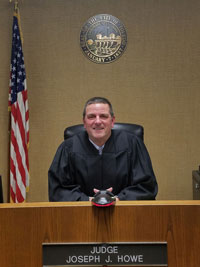Receivership
RECEIVERSHIPS OF NUISANCE PROPERTIES
(OHIO REVISED CODE SECTION 3767.41)
Receivership is a method of dealing with nuisance properties when the owner refuses to abate the nuisance. Toledo Municipal Court or the Lucas County Court of Common Pleas may appoint the City of Toledo or a non-profit corporation such as a Community Development Corporation (CDC) as the receiver of the property to correct the housing code violations and manage the property.
The receivership process begins with filing "A Petition to Abate a Public Nuisance" under O.R.C. §3767.41.
After notice is given to interested parties, a hearing is convened to determine whether the property is a public nuisance.
Evidence must be shown at the hearing that:
- the building is residential,
- unsafe, or
- dangerous, or
- otherwise, in violation of the City's ordinances.
 If the Court finds that the property is a public nuisance, the owner is ordered to abate the nuisance.
If the Court finds that the property is a public nuisance, the owner is ordered to abate the nuisance.
WHO MAY BRING A NUISANCE ABATEMENT ACTION?
Any of the following:
- A neighborhood landowner who lives within 500 feet of the subject building
- The municipal corporation where the property is located
- A non-profit corporation that is duly organized and has as one of its goals the improvement of housing conditions in the county or municipal corporation in which the building involved is located
- A tenant of the building alleged a nuisance
SIX ELEMENTS FOR RECEIVERSHIP TO WORK
1. If it is control and eventual ownership the community group is seeking, it must select the buildings and owners accordingly. In other words, groups should look for buildings that need basic repairs, but are not wholly deteriorated. The owners should not be likely to redeem the property once the receivership is over.
2. There must be some person or entity capable of competently being a property receiver with the requisite accounting, legal, repair/rehab and management skills and resources available.
3. As the repairs are likely to cost more than the rents can produce, a beginning capital fund is helpful.
4. Cooperation from the City officials is helpful, and might even be essential.
5. The Court's cooperation is essential, and the Judges, as well as City officials, should be involved in planning how the process will be done and what paperwork is needed.
6. Legal counsel is essential to research the law and draft the model documents and Court orders. Once the procedures are established and the Judges understand those procedures, the process should not be that difficult nor time-consuming. In a recent national study it was found that of the 13 cities with receivership programs, the typical time for a property to be placed in receivership was about four weeks.
Click here for a PDF of the Ohio Receivership Statute this program is free to download
this program is free to download


